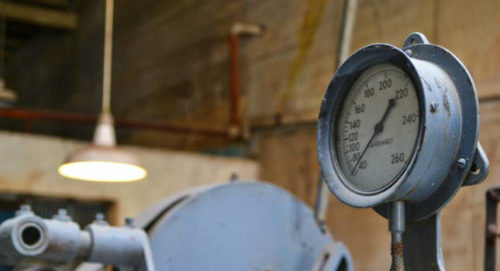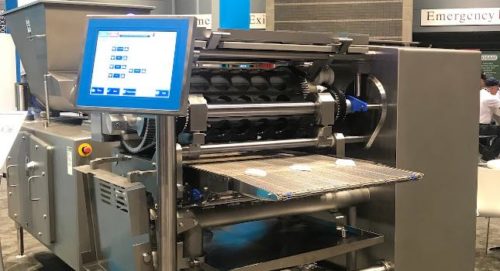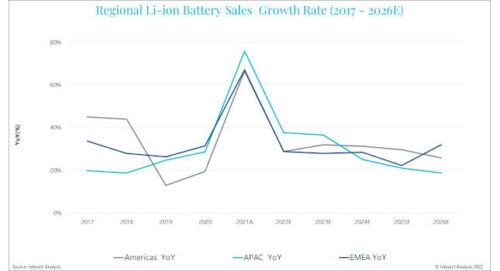Energy, Power
Energy is the power to do work. Energy can change forms but is not created or destroyed. Power is the rate of work (work over time) or the rate of energy transfer and common units include watt, one joule per second, (and multiples, such as kilowatts, kW, and megawatts, MW) and horsepower (hp).
Energy, Power Articles
Gaining energy intelligence at equipment, process level
Gaining vision of site-wide energy consumption – especially at an equipment and process level – can transform both energy and operational efficiency, says Jakob Gossmann.
Energy Insights
- Increasing energy prices have increased the need for action against climate change. The responsibility to falls on companies to become more energy efficient by measuring and analyzing energy consumption using on-site generators and energy intensive equipment.
- Energy intelligence is a power that companies need to utilize if they want to mitigate costs and contribute to climate change efforts.
- A Centrica solution has helped some companies lower their energy costs by 8% and found that there is potential for energy consumption to be reduced by 4% if timers are used to switch machines off during non-operational hours.
Sky-rocketing energy prices and the urgent need for climate action make it a good time to push energy and operational efficiency further. But, to achieve this step change it is necessary to have an understanding of how, when and where energy is being used across an entire site.
Industrial Internet of Things (IIoT) innovations now make it possible to capture, analyze and visualize site-wide energy consumption, including on-site generators and energy intensive equipment and provide companies with energy intelligence.
When it is understood how much is being spent 24/7 and on what specific assets or processes across the operation, it becomes possible to make informed business decisions to deliver cost, carbon and production savings.
Internet of Things (IoT) technologies can provide energy insights at a circuit-level of granularity by linking a cloud-based analytics platform to utility meters and wireless sensors that monitor critical assets – such as energy intensive equipment and production processes, HVAC components, lighting and cooling systems. It is now possible to attach self-powered, non-invasive sensors onto the outgoing electrical wire that powers each device, without disrupting operations.
The sensors and utility meters, together with any distributed generation assets can then continuously collect critical energy intelligence. Data can be delivered in real-time to an energy management platform to create a single, holistic view of energy footprint – providing up-to-date visibility of energy performance at the required level of detail.
Monitoring energy usage at a device-level helps identify hidden waste – creating opportunities for high impact energy efficiency improvements that can reduce costs and help relieve the impact of higher tariffs. It can also help inform and influence employee behavior change to further improve energy performance.
Cost savings in action
Textile manufacturer, Pincroft, used a Centrica energy insights solution to transform its energy management. Sensors collect real-time energy data from over 100 critical energy-consuming assets and also capture third-party meter data to monitor hot and cold water, steam and gas. This has reduced weekend energy spend by 94% and weekday energy spend by 29% – putting Pincroft on track to achieve annual CO2 savings of 648 tonnes. The project provided a payback on investment in just three months.
Plastcoat, a division of Magna International, is using our technology to drive significant cost savings, while also improving predictive maintenance, operational efficiency and productivity.
Consuming less energy means lower carbon emissions – enabling industry to work towards net zero targets and meet increasing environmental pressures from consumers, regulators and other stakeholders.
Altex Group is using a Centrica solution to cut energy costs by 8%, while reducing CO2 emissions by 53,553 tons. Wireless sensors were used in each production facility to capture the energy consumption data of refrigeration equipment, air compressors, cooling towers, evaporators and other critical assets.
With access to the energy data, it was identified that energy consumption could be reduced by 4% if timers were used to switch equipment off during non-operational hours. A further 12% reduction in energy consumption has also been achieved by analyzing different sequencing of compressor operation to optimize their usage.
One of the biggest benefits of using device-level data in industry is improved operational efficiency and business resilience. Anomalies picked up by energy analytics software can identify deep-lying faults in equipment or weaknesses in operational performance that are difficult to detect. Data can also inform maintenance requirements, including predictive 24/7 alerts to reduce downtime, increase productivity and extend asset life.
Centrica partnered with a global cement and asphalt producer to measure energy use and pinpoint consumption across different equipment, buildings and plant. By monitoring real-time energy usage of critical energy-hungry machinery and using its PowerRadar platform to examine the data, it was identified that a conveyor motor was not working correctly which was creating a bottle neck in the process. Fixing this increased production output to achieve an annual $211,383 saving at just one location. Further cost savings have been made through identifying unnecessary out-of-hours energy use across buildings and plants.
Data intelligence also informs opportunities to use energy flexibly for cost reduction and revenue generation. For example, it can indicate how you can shift loads to avoid peak time power costs and where there’s flexible power capacity to drive payments from demand side response (DSR) activities and other trading opportunities.
IIoT-based technology underpins the flexibility and market optimization strategy of one UK paper manufacturer. By capturing data from meter points, BEMs systems and their CHP plant, the company has complete visibility of site-wide energy usage and can pinpoint efficiency and flexibility opportunities. The technology provided by Centrica to achieve this is integrated with an AI enabled utility optimization platform to manage market opportunities and unlock significant revenue streams for the company.
With increasing regulatory and legislative oversight of Scope1, 2 and 3 emissions, having a proactive approach to monitoring and measuring your energy consumption ensures a clear view of your emission sources and effective compliance.
Energy, Power FAQ
-
How is energy different than power?
Energy is a physical quantity that describes the ability to do work. Power, on the other hand, is the rate at which work is done or energy is transferred. Energy is a scalar quantity, whereas power is a vector quantity with both magnitude and direction. Energy is usually measured in joules, whereas power often is measured in watts.
-
What is the relationship between energy and power?
Energy and power are related as energy is the ability to do work, and power is the rate at which work is done. Energy is the product of power and time. Mathematically, the relationship of energy and power can be expressed as:
Energy (E) = Power (P) x Time (t)
The more power that is applied, the more work is done in a given time, and the more energy is expended. If the same amount of work is done in less time, then more power is required.
-
How is power used in manufacturing?
Power is used in manufacturing for a variety of purposes, including:
- Machinery and equipment operation: Power is used to run and operate various types of machinery and equipment, such as conveyors, robots and production lines.
- Heating and cooling: Power is used to heat and cool manufacturing facilities to maintain a comfortable working environment.
- Lighting: Power is used to provide lighting for manufacturing facilities, including production areas, offices and storage areas.
- Material handling: Power is used to operate material handling equipment, such as forklifts, cranes and hoists.
- Processing: Power is used to run various processes, such as automated cutting, welding, painting, as well as for operating temperature control systems for specialized processes.
- Quality control: Power is used to operate quality control equipment, such as measuring devices and inspection machines.
- Automated processes: Power is used to run automated processes, such as those that use programmable logic controllers (PLCs) and other types of control systems.
-
What is the role of energy efficiency in manufacturing?
Energy efficiency plays a crucial role in modern manufacturing by helping companies reduce energy consumption, lower costs and improve their environmental footprint. The role of energy efficiency in manufacturing can be summarized as follows:
- Cost reduction: By reducing energy consumption, manufacturers can lower energy costs and improve their bottom lines.
- Environmental sustainability: Energy efficiency helps manufacturers reduce their carbon footprint, lower their greenhouse gas emissions and contribute to a cleaner, more sustainable environment.
- Improved productivity: Energy-efficient technologies and processes can help improve the efficiency and productivity of manufacturing operations, leading to increased output and competitiveness.
- Energy security: By reducing their energy consumption, manufacturers can reduce dependence on energy imports and increase energy security.
- Compliance with regulations: Energy efficiency can help manufacturers comply with energy efficiency regulations, such as the European Union's Energy-related Products (ErP) Directive, and avoid costly penalties.
- Enhanced reputation: By demonstrating a commitment to energy efficiency, manufacturers can enhance their reputations and attract customers who are looking for environmentally responsible products.
Some FAQ content was compiled with the assistance of ChatGPT. Due to the limitations of AI tools, all content was edited and reviewed by our content team.








